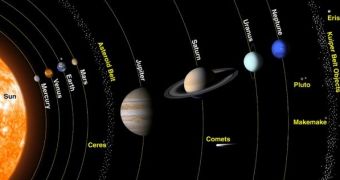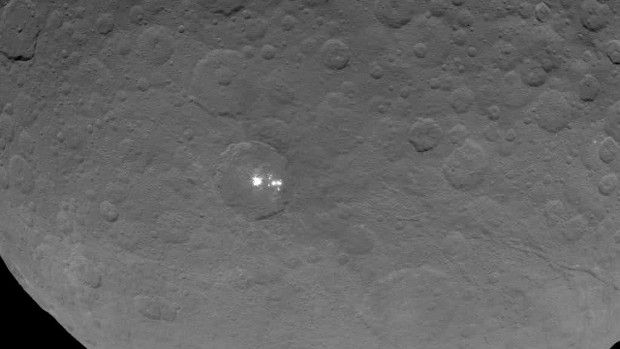A view of dwarf planet Ceres produced by NASA's Dawn spacecraft back in this year's January was the first evidence of odd-looking white spots shining bright on the surface of the orb.
It's been weeks since then, and although NASA's Dawn probe has moved closer to Ceres and has, therefore, managed to beam back better images of the mysterious bright spots, scientists are still a long way from solving this mystery.
The latest view of Ceres' surface, obtained on May 16 from a distance of about 4,500 miles (7,200 kilometers), shows that the white spots have a rather irregular form.
This leads mission scientists to believe that the peculiar appearances are good old sunlight reflecting off ice present on the dwarf planet.
“Dawn scientists can now conclude that the intense brightness of these spots is due to the reflection of sunlight by highly reflective material on the surface, possibly ice,” said researcher Christopher Russell.
Then again, the spots could also be signs of volcanic activity, geysers or run-of-the-mill salt deposits.
Come June 6, NASA's Dawn probe is expected to get as close as 2,700 miles (4,400 kilometers) to Ceres. It will remain in this orbit until June 30, when it will attempt an even closer approach.
The view obtained on May 16 has a resolution of 2,250 feet (700 meters) per pixel. As it works its way closer to its target, Dawn will deliver ever clearer and more detailed images.

 14 DAY TRIAL //
14 DAY TRIAL // 

